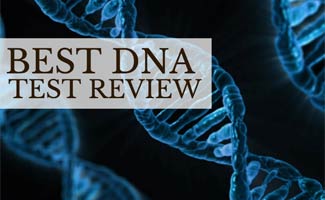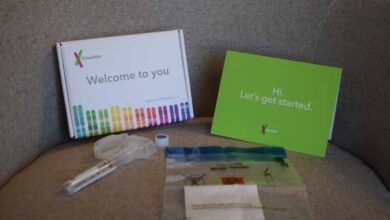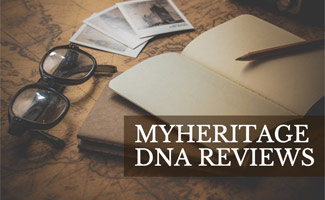Can A DNA Test Be Wrong? What The Science Says

Oh look, honey, he has your eyes!
These words may come as a welcome surprise or as one you weren’t expecting, depending on the circumstances. In fact, 1 in 3 fathers who suspect that a child is not theirs are right – says the science anyways.
Whether you are looking into paternity, ancestry, or trying to solve a crime, DNA tests are everywhere these days. But, can a DNA test be wrong? Can we place our confidence and future in the accuracy of today’s DNA tests?
These are important questions and we invite you to read on to find the answers.
Examining the Accuracy of DNA Tests
DNA testing has proven itself as the most reliable form of biological evidence since 1985. But what does that mean in context of crime scene evidence, answers to paternity questions, and medical pointers related to health conditions? Our experts find out as they investigate the accuracy of DNA testing.
DNA Technology in Brief
DNA can be extracted from biological samples such as saliva, blood, semen, skin cells, or hair follicles. Once submitted to a testing lab, the sample undergoes several procedures including:
- Extracting the DNA from the cell
- Determining the quantity of DNA available
- Amplifying the sample into multiple copies
- Separating the resulting DNA for analysis
- Analyzing and interpreting the sample and comparing to known profiles
Analysts work with an electropherogram that displays the raw data from the sample DNA translated into a graph. This graph shows the length of certain DNA fragments at set loci on the DNA strand and these patterns determine the likelihood of a match.
Labs can test for as many patterns as they choose, however, today’s technology generally accepts that 3 – 5 matching loci are sufficient evidence of a DNA source.
The FBI uses short tandem repeat (STR) technology in their testing and makes use of a 13-loci DNA profile. This intensive testing means that they can state with certainty that the DNA results for forensic purposes are accurate. In fact, the chances of two people sharing the same 13 DNA points is at least 1 in 1 billion.
While a variety of testing techniques are available, in essence, the more data points that are identified and compared, the more discriminating the test results.
Can a DNA Test Be Wrong?
Many people ask if a DNA test can be inaccurate. For example, can a paternity test be wrong? Questions like these are valid, especially when considering the implications of the results of such a test.
The question you should be asking though, is, “Can I receive incorrect results from a paternity test?” Here are some of the reasons why you can, in fact, receive inaccurate results from a DNA test.
Contaminated DNA Samples
Many choose the convenience of home DNA tests but lack the training needed to deliver viable DNA samples.
During the process, if sample contamination occurs, the results will almost certainly be affected. For example, sneezing, coughing, or allowing the sample to come into contact with another person will result in contamination.
Additionally, damaged containers or cross-contamination between samples may render the samples useless.
Lab Errors
Lab errors can also affect the results of a DNA test if, for instance, samples are mixed up and tests run on the wrong specimen. Cross-contamination can occur in this setting too if the samples are not handled properly. There have even been cases where a paternity retest is performed using a previous DNA sample, proving that accidents can happen.
Manipulating Results
It’s not uncommon for a mother to submit an incorrect sample for testing in order to get the result she wants. Presenting a cheek swab or hair sample of another child belonging to the father, for instance, instead of the child in question would provide a false result.
Sadly, when there’s money at stake, people have been known to employ some nefarious methods to gain financial benefits. Or in fact, to avoid financial responsibilities.
Faulty DNA Tests
While not common, there may be a problem with an element of the testing kit. To avoid this, make sure that the company you are using is credible and that the kit supplied is sealed with no signs of damage or tampering. If you’re ordering home DNA kits then be sure to read up on the company and check any available reviews.
False Inclusion
DNA paternity tests look for a unique set of markers that a father and child share. However, as we all share a hefty portion of our DNA with the rest of the human population, these markers need to be highly specific to both parties to confirm paternity. The more markers tested, the greater the accuracy of the result.
In some cases, though, DNA testing stops when they have found an identifying pattern between two samples. This results in a false inclusion as the genetic pattern may be relatively common. Additional tests on an increased number of markers, however, could reveal that the man is not the biological father of the child.
False Exclusion
False exclusion – when a result shows that a man is not the biological father of the child – is another issue that can arise. Reasons for this vary, and much of this falls into the realm of human error. In some cases, it’s simply a case of labs comparing the mother’s DNA with the alleged father, instead of the father and child.
However, if the biological father of a child submits someone else’s DNA for testing then this would obviously result in a false exclusion. In cases like this, home DNA testing would need to be supervised or the test would have to be conducted in a clinical setting.
Related Parties
An inaccurate DNA test could also come about if the biological father is related to the father taking the test. Close relatives such as brothers would share enough DNA to give a false positive.
What the Science Says
When a reputable lab runs DNA tests based on multiple DNA markers offering 99,99% accuracy, then the chances of the test being wrong are incredibly slim. If the results are inaccurate, it’s more likely that the incorrect samples were tested or were contaminated in some way.
This means that the DNA test itself is accurate, it’s just that we’re asking the wrong questions.
We’ve explored the domain of DNA, ancestry, and paternity in depth in many of our articles. We invite you to examine them in more detail if you still have questions about the validity of DNA tests.





It depends. An autosomal test should be able to distinguish a half-brother from a brother or an uncle from a father.
NextGen tests are partly statistical in nature – if you take an autosomal test twice it will give you slightly different results, Fortunately I am my own closest relative on the database.
Occasionally, errors can occur in testing particular STR markers, I had a different result from my ancestors on one marker, but my son did not. This was a clear error, so FTDNA re-tested and identified the error on my kit. This is rare.